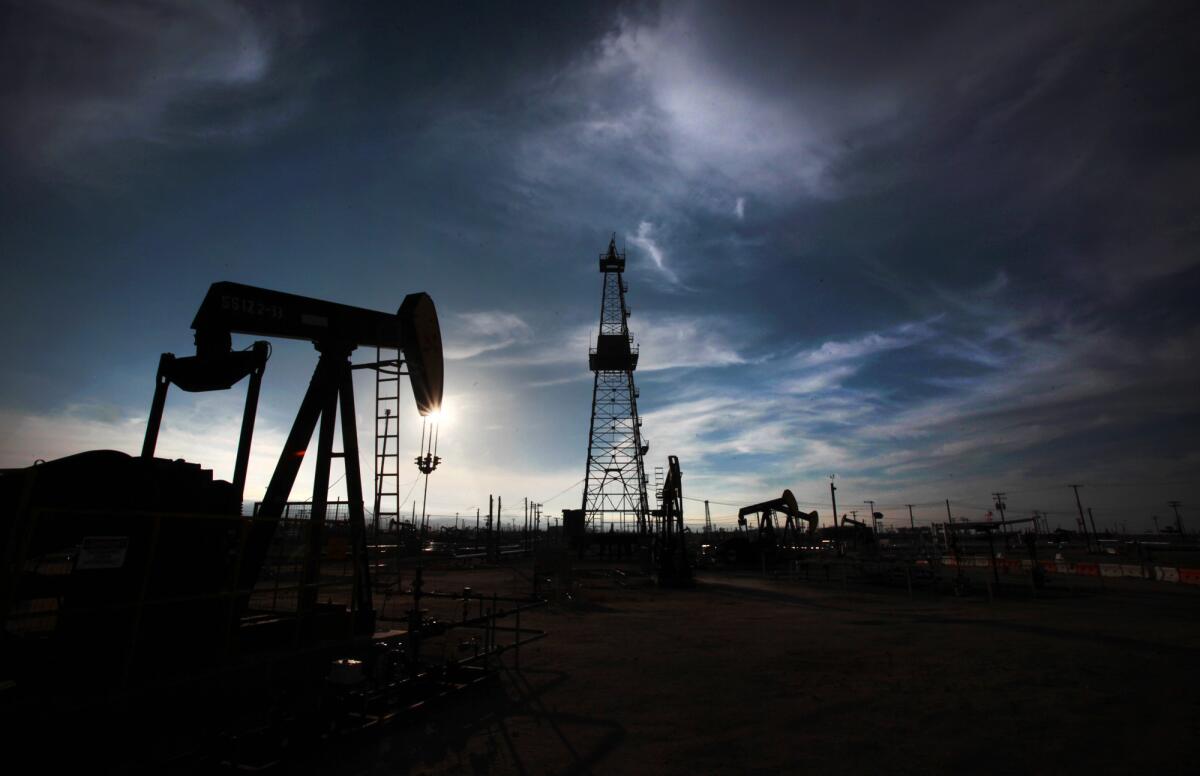California earthquake series in 2005 linked to oilfield wastewater injections, study finds

Pumps and drilling equipment in an oil field in Kern County.
A 2005 spate of quakes in California’s Central Valley almost certainly was triggered by oilfield injection underground, a study published Thursday said, in the first such link in California between oil and gas operations and earthquakes.
Researchers at the University of California at Santa Cruz, the University of Southern California and two French universities published their findings Thursday in a publication of the American Geophysical Union.
The research links a local surge in oil company injection of wastewater underground, peaking in 2005, with an unusual jump in seismic activity in and around the Tejon Oilfield in southern Kern County.
On Sept. 22, 2005, the shaking topped out with three quakes, the biggest registering magnitude 4.6, researchers said.
Researchers calculated the odds of that happening naturally, independently of the oilfield operations, at just 3 percent, lead author Thomas Goebel at the University of California at Santa Cruz said Thursday.
In Oklahoma and some other Midwestern states, the U.S. Geological Survey and others have linked oilfield operations with a dramatic surge in earthquakes. Many of those quakes occur in swarms in places where oil companies pump briny wastewater left over from oil and gas production deep underground.
“It’s important to emphasize that definitely California is not Oklahoma,” Goebel said. “We don’t really expect to see such a drastic increase in earthquake occurrences” in California given different oilfield methods and geology in the two areas.
However, the oilfield operation “may change the pressure on … faults, and cause some local earthquakes” in California, he said.
Researchers are now studying other areas of the state to see if California’s high background level of shakiness is obscuring other seismic activity possibly linked to oilfield activity.
California is the country’s No. 3 oil-producing state.
The Center for Biological Diversity environmental group, using state figures, estimates that the amount of oilfield wastewater injected underground in California climbed from 350,000 barrels in 1999 to 900,000 barrels in 2014.
California on Dec. 10 commissioned Lawrence Berkeley National Laboratory to study the overall potential for oilfield-induced quakes in the state, said Don Drysdale, spokesman for the state Division of Oil, Gas and Geothermal Resources, the main oil regulatory agency. Rules that went into effect last year for some intensive forms of oil production require monitoring for seismic activity.
More to Read
Sign up for Essential California
The most important California stories and recommendations in your inbox every morning.
You may occasionally receive promotional content from the Los Angeles Times.










